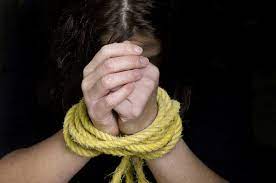The Global Scale of Human Trafficking and Modern Slavery
You see the ads on the highway promising easy money. You scroll past the suspicious job posts online offering big pay for little work. But do you realize human trafficking hides in plain sight? These tricks lure unsuspecting people into modern-day slavery. Luckily, organizations that fight human trafficking exist. By joining forces, they educate communities, support survivors, and pursue justice. Read on to discover how you can spot trafficking and help stop it. With vigilance and compassion, we can end slavery’s grip on humanity.
Leading Organizations That Fight Human Trafficking Worldwide
A Shocking Reality
According to the International Labour Organization, there are over 40 million victims of human trafficking and forced labor worldwide. This includes people trapped in forced labor, forced marriage, slavery, and human trafficking. The reality is sobering – no country is immune and victims can be found in both rich and poor nations.
Who is at Risk
Women and girls make up 71% of human trafficking victims. Refugees and migrants are also vulnerable groups, especially those displaced due to conflict or natural disasters. Some traffickers prey on people seeking job opportunities abroad or trying to escape poverty. They lure victims with false promises of good jobs and better lives, then force them into labor, prostitution, or other exploitative situations once they’ve been moved from their communities.
The Profits of a Shadow Industry
Human trafficking is a highly lucrative shadow industry, generating over $150 billion in profits annually for traffickers. Victims are seen as commodities that can be exploited repeatedly for the financial gain of traffickers. Forced labor and the commercial sex trade are the most common forms of exploitation. Traffickers ruthlessly maximize profits while denying victims their basic human rights and dignity.
Joining Together to End Modern Slavery
Tackling an issue as complex as human trafficking requires a collaborative global response. Governments, NGOs, and individuals must work together to prevent trafficking, protect victims, prosecute traffickers, and promote partnerships. By raising awareness, advocating for stronger laws, and supporting organizations fighting forced labor and exploitation, we can all help end modern slavery. Together, we have the power to eliminate this gross violation of human rights.
How You Can Support and Get Involved With Anti-Trafficking Organizations That Fight Human Trafficking
Polaris
Polaris is a leader in the global fight to eradicate modern slavery. They operate the U.S. National Human Trafficking Hotline and have aided over 49,000 survivors of human trafficking. Polaris works with government agencies, social service organizations, and corporations to identify and stop human trafficking.
International Justice Mission (IJM)
IJM is a global organization that protects people in poverty from violence. They rescue victims of human trafficking, bring perpetrators to justice, and help local authorities prevent future abuse. IJM has 21 field offices in 13 countries where they partner with local authorities to rescue victims of trafficking. They provide survivors counseling and help them find stable jobs and housing.
A21
A21 is an international anti-human trafficking organization dedicated to abolishing modern slavery. They work with trafficking survivors to develop survivor-informed programs and provide legal support. A21 also works with law enforcement to identify perpetrators and dismantle trafficking operations. Through education and advocacy programs, they aim to prevent exploitation by raising awareness about human trafficking.
Coalition to Abolish Slavery and Trafficking (CAST)
CAST is a Los Angeles-based organization working to put an end to human trafficking and modern slavery. They provide support services to survivors including shelter, legal services, and job training programs. CAST also works with corporations and lawmakers to establish policies against human trafficking. Their advocacy and education programs promote prevention by teaching communities how to identify signs of human trafficking.
